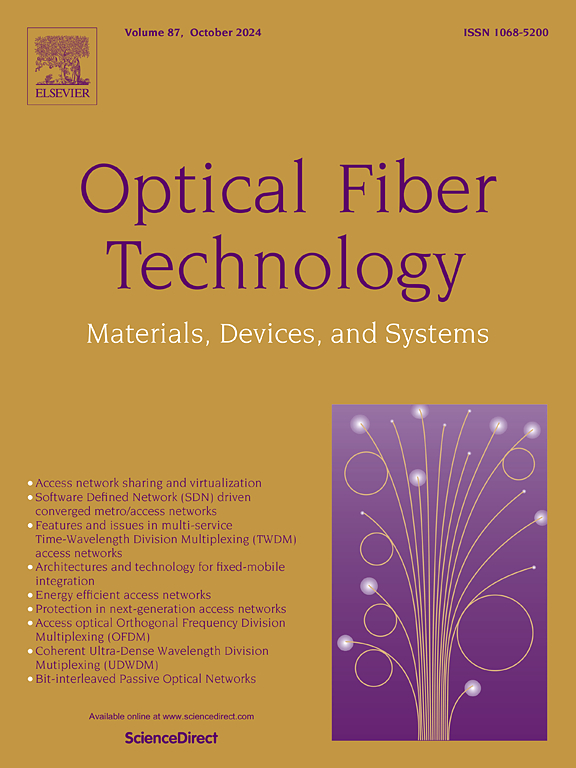Cobalt coated optical fiber in distributed optical fiber sensing for effective tracking and monitoring of magnetic nanoparticles in the reservoir
IF 2.6
3区 计算机科学
Q2 ENGINEERING, ELECTRICAL & ELECTRONIC
引用次数: 0
Abstract
Enhanced and Improved Oil Recovery (EOR/IOR) projects critically depend on effective tracking and monitoring of fluid mobility in the reservoir for optimal operation. Traditional fluid tracking methods often struggle with low spatial resolution and fail to accurately monitor low-contrast fluids in complex reservoirs, leading to gaps in understanding fluid movement. This paper introduces an innovative subsurface monitoring approach for EOR/IOR that leverages magnetic nanoparticles (MNPs) combined with a cobalt-coated fiber optic (CoF) sensing system installed along the borehole. The CoF system is optimized for high magnetic sensitivity (10-5 T) and sub-meter spatial resolution, enabling precise detection of MNP movements within the reservoir. Our research includes a sensitivity analysis that identifies the ideal magnetic permeability (μ between 10 and 100) for effective MNP injection and laboratory-scale experiments in a sand column setup to validate magnetic modeling. The CoF sensors demonstrated a 30 % improvement in magnetic field sensitivity compared to nickel-coated fibers, while effectively distinguishing between magnetic field changes and minor temperature variations, with a tolerance threshold of ± 2°C. The results show that CoF sensors can reliably track MNPs, map fluid flow along the borehole, and provide continuous, real-time data on fluid dynamics. Additionally, the study addresses the impact of temperature fluctuations on sensor performance and proposes mitigation strategies. These findings suggest that this novel approach significantly enhances the accuracy and reliability of EOR/IOR monitoring, leading to improved reservoir management, operational efficiency, and oil recovery.
求助全文
约1分钟内获得全文
求助全文
来源期刊

Optical Fiber Technology
工程技术-电信学
CiteScore
4.80
自引率
11.10%
发文量
327
审稿时长
63 days
期刊介绍:
Innovations in optical fiber technology are revolutionizing world communications. Newly developed fiber amplifiers allow for direct transmission of high-speed signals over transcontinental distances without the need for electronic regeneration. Optical fibers find new applications in data processing. The impact of fiber materials, devices, and systems on communications in the coming decades will create an abundance of primary literature and the need for up-to-date reviews.
Optical Fiber Technology: Materials, Devices, and Systems is a new cutting-edge journal designed to fill a need in this rapidly evolving field for speedy publication of regular length papers. Both theoretical and experimental papers on fiber materials, devices, and system performance evaluation and measurements are eligible, with emphasis on practical applications.
 求助内容:
求助内容: 应助结果提醒方式:
应助结果提醒方式:


